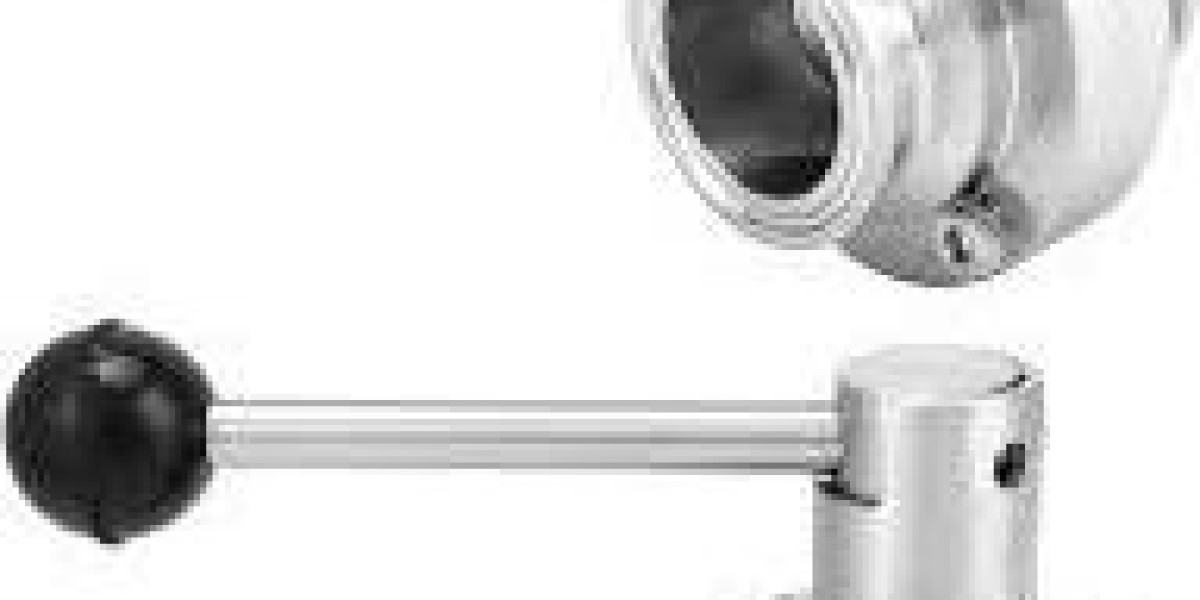In the food and beverage industry, maintaining hygiene, automation, and process efficiency is critical. One of the key components that support these requirements is the sanitary motorized ball valve. These valves are engineered to provide automated fluid control while meeting strict cleanliness standards essential in processing environments.
This article explains what sanitary motorized ball valves are, how they work, their benefits, typical applications in the food and beverage sector, and how to select the right valve for your process.
What Are Sanitary Motorized Ball Valves?
A sanitary motorized ball valve is a type of valve that uses an electric actuator to control the rotation of a ball inside the valve body. The ball has a hole through the center, and by rotating it 90 degrees, the flow of liquid can be started or stopped. What makes this valve “sanitary” is its design, which is optimized for hygienic processing environments like those found in food and beverage manufacturing.
These valves are usually constructed from stainless steel (typically SS316 or SS304) with highly polished internal surfaces. They are designed to prevent any build-up of bacteria, residue, or contaminants. Their motorized operation ensures consistent and automated flow control without the need for manual handling, which further reduces contamination risks.
Key Features
Sanitary motorized ball valves offer a range of features specifically tailored for hygienic processing:
Hygienic design with smooth surfaces and crevice-free interiors
Stainless steel construction with polished finishes (Ra ≤ 0.8 μm)
Tri-clamp, butt weld, or flange end connections for quick installation and removal
FDA-approved sealing materials such as PTFE, EPDM, or silicone
Compatible with CIP (Clean-in-Place) and SIP (Steam-in-Place) systems
Available in both on/off and modulating (partially open) versions
Electric actuator enables remote or PLC-controlled automation
Full port design for unrestricted fluid flow and minimal pressure drop
Long operating life with minimal maintenance requirements
Working Principle
The valve operates using a simple mechanism. A ball with a central hole is placed inside the valve body. The electric actuator is mounted on top of the valve and is responsible for rotating the ball.
In the open position, the hole in the ball aligns with the pipeline, allowing fluid to flow freely.
In the closed position, the ball rotates 90 degrees, and the solid side of the ball blocks the passage, stopping the flow.
Some versions allow partial opening, enabling control over the flow rate. This is especially useful in batching processes or flow regulation systems in beverage filling lines.
Common Applications in Food & Beverage Processing
Sanitary motorized ball valves are found throughout the food and beverage industry due to their cleanability, corrosion resistance, and ease of automation. Common applications include:
Beverage bottling and filling lines
Dairy processing equipment
Brewery operations for beer and fermentation control
Juice and soft drink manufacturing
Cooking oil and syrup flow systems
Pasteurized milk transfer systems
Water and liquid ingredient mixing systems
Cleaning and sterilization circuits (CIP/SIP)
These valves are ideal for handling fluids such as water, milk, beer, juice, sugar syrup, flavoring agents, oils, and other ingredients that must remain uncontaminated during processing.
Benefits of Using Sanitary Motorized Ball Valves
Improved Hygiene
Their polished surfaces and clean design ensure that no bacteria or food particles get trapped. This helps maintain product purity and meet stringent food safety standards.Automated Flow Control
Automation is key to modern food processing plants. These valves enable remote and programmatic control, reducing manual labor and minimizing the chance of human error.Fast and Reliable Operation
Motorized ball valves open and close quickly, making them perfect for systems that require frequent switching between on and off states.Durable and Long-Lasting
Constructed from corrosion-resistant stainless steel, they are built to withstand acidic and sugary fluids without degrading over time.Easy to Clean and Maintain
Their compatibility with CIP/SIP systems means cleaning is efficient, reducing downtime and increasing productivity.Energy Efficiency
Electric actuators consume power only during the actuation cycle, making them more energy-efficient than some pneumatic alternatives.Space-Saving Design
Compact motorized ball valves save valuable space on crowded process lines or inside equipment enclosures.
Selection Criteria
When selecting a sanitary motorized ball valve for food and beverage applications, consider the following factors:
Material Compatibility
Ensure the valve body and seals are compatible with the fluids being handled. Stainless steel 316L is preferred for its superior corrosion resistance.Actuator Type and Control Signal
Choose the right actuator type (on/off or modulating) and control method (manual switch, PLC, 4-20 mA signal, etc.) based on your automation setup.Valve Size and Flow Rate
The valve should be appropriately sized to maintain the desired flow rate and pressure without restriction.Cleaning Method
Ensure compatibility with your cleaning method, especially if using high-pressure steam or strong chemicals.Mounting and End Connections
Pick the right connection type—tri-clamp, butt weld, or flanged—based on how the valve will be installed in your system.Certifications
Look for valves with certifications like FDA, 3-A Sanitary Standards, or EHEDG to meet regulatory requirements.
Conclusion
Sanitary motorized ball valves are a crucial component in food and beverage processing systems where hygiene, automation, and reliable performance are required. Their smooth internal surfaces, corrosion resistance, and compatibility with clean-in-place systems make them an excellent choice for applications ranging from beverage filling to dairy production.
By automating flow control and minimizing contamination risks, these valves help manufacturers achieve higher productivity, better product quality, and compliance with global food safety standards.
Whether you are designing a new plant or upgrading existing equipment, investing in high-quality sanitary motorized ball valves will enhance your process reliability and operational efficiency.








